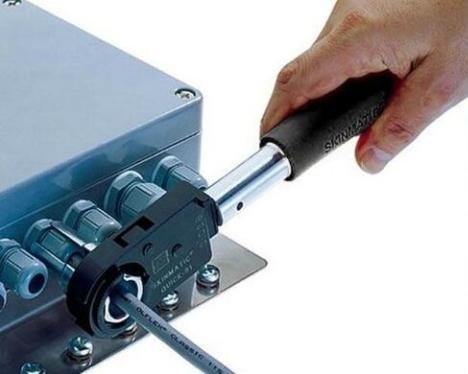How to Choose the Right Cable Gland for Different Applications
Table of Contents
Have you ever struggled to choose the right cable gland? Don’t worry-you’re not alone! Cable gland may be small, but they play a key role in ensuring the safety and stability of your electrical systems. Whether you’re in industrial automation, petrochemicals, or marine engineering, choosing the wrong cable gland can lead to water leaks, short circuits, and even safety incidents, resulting in unnecessary repair costs and downtime.
In this article, we’ll walk you through the essential functions, types, and selection criteria for cable glands, helping you quickly find the most suitable product for your specific application. Whether you’re an engineer, procurement manager, or maintenance professional, this guide will help you make more confident and professional choices. Ready? Let’s dive into the world of cable glands!
Basic Functions and Types of Cable Glands
Main Functions of Cable Glands
Simply put, a cable gland is a device used to secure and seal cables where they enter equipment. Its main functions include:
- Securing cables to prevent loosening or slipping
- Providing waterproof and dustproof protection for internal electrical equipment
- Preventing corrosion and extending equipment lifespan
- Enhancing safety by preventing cable damage from pulling or twisting
Imagine if there were no cable glands-cables would be exposed at the entry point, allowing dust and moisture to enter freely and greatly increasing the risk of electrical failure.
Common Types of Cable Glands
Depending on your needs, cable glands can be divided into:
- Standard type: Suitable for general industrial and commercial environments
- Explosion-proof type: For hazardous areas such as oil, gas, and mining, compliant with ATEX and IECEx certifications
- EMC (Electromagnetic Shielding) type: For shielded cables, preventing electromagnetic interference
- Multi-hole type: Secures multiple cables at once, saving space
- Vent gland type: Allows air flow, preventing pressure build-up in equipment
Each type has its unique design and function, so be sure to match the type to your actual environment.
Key Factors for Selecting Cable Glands in Different Applications
The most critical aspect of choosing the right cable gland is understanding your application scenario. Here are some key points to consider:
Matching Cable Types
- Armored cables: Require glands with mechanical clamping to securely fix the armor layer.
- Non-armored cables: Usually have a plastic or rubber sheath; standard or waterproof glands are sufficient.
- Shielded cables: Need EMC-type glands to ensure grounding and prevent electromagnetic interference.
- Multi-core or multiple cables: Multi-hole glands are ideal for saving installation space and making management easier.
Environmental Factors
- Indoor environments: Standard or plastic glands are usually sufficient.
- Outdoor environments: Consider waterproof ratings (IP66/IP68), UV resistance, and corrosion-resistant materials.
- Damp or corrosive environments: Stainless steel (316) is recommended for salt spray and chemical resistance.
- High or low temperatures: Choose materials with good temperature resistance, such as brass or special plastics.
- Hazardous areas: Explosion-proof certified glands are a must for safety and compliance.
Material Selection
| Material | Advantages | Suitable Environments |
|---|---|---|
| Plastic (Nylon) | Lightweight, corrosion resistant, economical | General industrial, indoor |
| Nickel-plated brass | High mechanical strength, corrosion resistant | Industrial, distribution boxes, outdoor |
| Stainless Steel 304/316 | Superior corrosion resistance, high strength | Marine, chemical, hazardous |
Size and Thread Specifications
- Select the gland size based on the cable’s outer diameter to ensure the sealing ring fits snugly.
- Common thread types include Metric (M), NPT (National Pipe Thread), and PG (Panzer-Gewinde).
- The wrong size can cause poor sealing or installation difficulties.
Certifications and Standards
- IP Ratings: IP66, IP67, and IP68 are common-higher numbers mean better protection.
- Explosion-proof certifications: ATEX, IECEx, UL, CSA, etc., for safe use in hazardous areas.
- Industry standards: Such as EN45545 (railways), NEMA (North America), and others.
Cable Gland Selection Process
Choosing the right cable gland isn’t as complicated as it seems-just follow these six steps:
- Identify your application and industry needs: Are you in industrial automation or marine engineering?
- Determine cable type and specifications: Is it armored or non-armored? What’s the cable diameter?
- Assess environmental conditions: Is it indoors or outdoors? Any corrosion or explosion-proof requirements?
- Choose the right material and protection level: Plastic, brass, or stainless steel? What IP rating do you need?
- Confirm thread type and size: Make sure it matches your equipment interface.
- Check certifications and standards: Ensure compliance for safety and industry regulations.
Typical Application Scenarios and Selection Recommendations
| Application | Recommended Gland Type | Material Suggestion | Certification Requirement |
|---|---|---|---|
| Industrial Automation | Standard/Multi-hole | Plastic/Brass | IP68 |
| Petrochemical (Hazardous) | Explosion-proof (Exe/Exd) | Stainless Steel/Brass | ATEX, IECEx, IP68 |
| Marine & Shipbuilding | Waterproof & Corrosion-resistant | 316 Stainless Steel | IP68, Corrosion resistance |
| Power Distribution Box | Standard/EMC | Brass/Stainless Steel | UL, CSA |
| Communication Equipment | Multi-hole/Vent | Plastic/Brass | IP66/IP68 |
For example, if you’re a marine equipment manufacturer, we recommend using 316 stainless steel waterproof glands-they resist salt spray corrosion and ensure long-term stable operation.
Choosing the right cable gland is no small matter. The correct choice not only ensures equipment safety but also saves maintenance costs and improves system stability. We hope this guide helps you clarify your options and make informed decisions.
Still unsure about your selection? Want to know more about customized solutions? Feel free to contact us! With extensive industry experience and a diverse product range, we offer professional advice and high-quality samples tailored to your needs.




